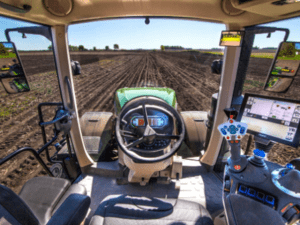Source: Erdal Ozkan, OSU Extension
I had an article in last week’s CORN newsletter encouraging growers to fine tune and calibrate their sprayers. I had mentioned that the next couple of weeks may be the last best time period to do this since planting season is just about to start. There would not be any better time to do this than now. The next day I got an email from a grower asking me this question that I get often: “I have a rate controller in the cab that regulates the flow rate of the sprayer regardless of the changes in sprayer ground speed. So, should I still calibrate the sprayer to find out the application rate?”. The answer is, Yes, you should. Although the rate controllers do an excellent job with regulating the flow rate of nozzles to keep the application rate constant, a manual calibration at least once a year is needed to ensure the rate controller is functioning properly.
Here is why we should confirm the accuracy of rate controllers: Unfortunately, electronic controllers usually cannot detect flow rate changes on each nozzle on the boom, and none can detect changes in spray pattern. If a nozzle is plugged, or extremely worn out, the rate controller cannot tell us this is happening. It will still try to maintain the constant application rate by changing the system pressure and force other nozzles to spray less or more to overcome the problem in one or several nozzles. If the ground speed sensor works based on revolutions of the tractor wheels, the ground speed determined may not be accurate, because of the slippage that may occur under some ground conditions. Even the tire pressure being off just a few psi may change the tire revolutions per minute leading to erroneous travel speed readings. Finally, Controllers don’t show changes in spray patterns that may happen when a nozzle is defective, plugged, or worn-out. So, we will have to continue manually checking the flow rate of the nozzles, and visually observing the changes in spray patterns until the technology is developed to do these observations remotely, and on-the-go.
As I mentioned in the article in last week’s CORN newsletter, it usually doesn’t take more than 30 minutes to calibrate a sprayer, and only three things are needed: a watch or smart phone to record the time when measuring the nozzle flow rate or the travel speed, a measuring tape, and a jar graduated in ounces. Please take a look at the Ohio State University Extension publication FABE-520 for an easy method to calibrate a boom-type sprayer. Here is the URL for this publication: http:// ohioline.osu.edu/factsheet/fabe-520
Not knowing limitations of rate controllers may create serious problems. I already mentioned how smoothly the rate controllers keep the application rate the same regardless of changes in travel speed. However, this convenience comes at a cost if the controller is forced to make drastic changes in the application rate as a result of too high or too low of a travel speed. As you know, to achieve best results from pesticides, the application rate, as well as the droplet size must remain relatively unchanged during the entire spraying. When sprayer speed goes up, to maintain the pre-set application rate, the controller requires the system pressure to go up to increase the nozzle flow rate. This, unfortunately results in more drift-prone droplets coming out of the nozzle, especially if the nozzle used is designed for low application rates within the recommended pressure ranges. Conversely, when the sprayer slows down, the opposite happens: the controller forces the system to lower the pressure, in order to reduce flow rate of nozzles. This will result in production of larger than the desired size of droplets, leading to inadequate coverage. If you are spraying Dicamba or 2,4-D herbicides, you need to pay even more attention to operation of rate controllers. As you know, only a small number of nozzles at specific ranges of pressure can be used to spray these products. Significant changes in ground speed may force the rate controller to make significant changes in spray pressure that may be outside the allowable legal pressure range required to spray these herbicides. Without you realizing it, you may find yourself in violation of the label. Make sure the nozzle size selected will allow the controllers to make necessary changes in the flow rates while still staying within a safe, applicable and allowable pressure range.

